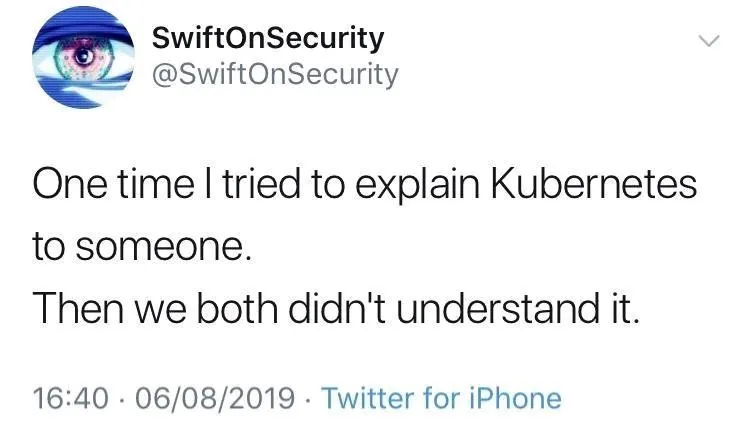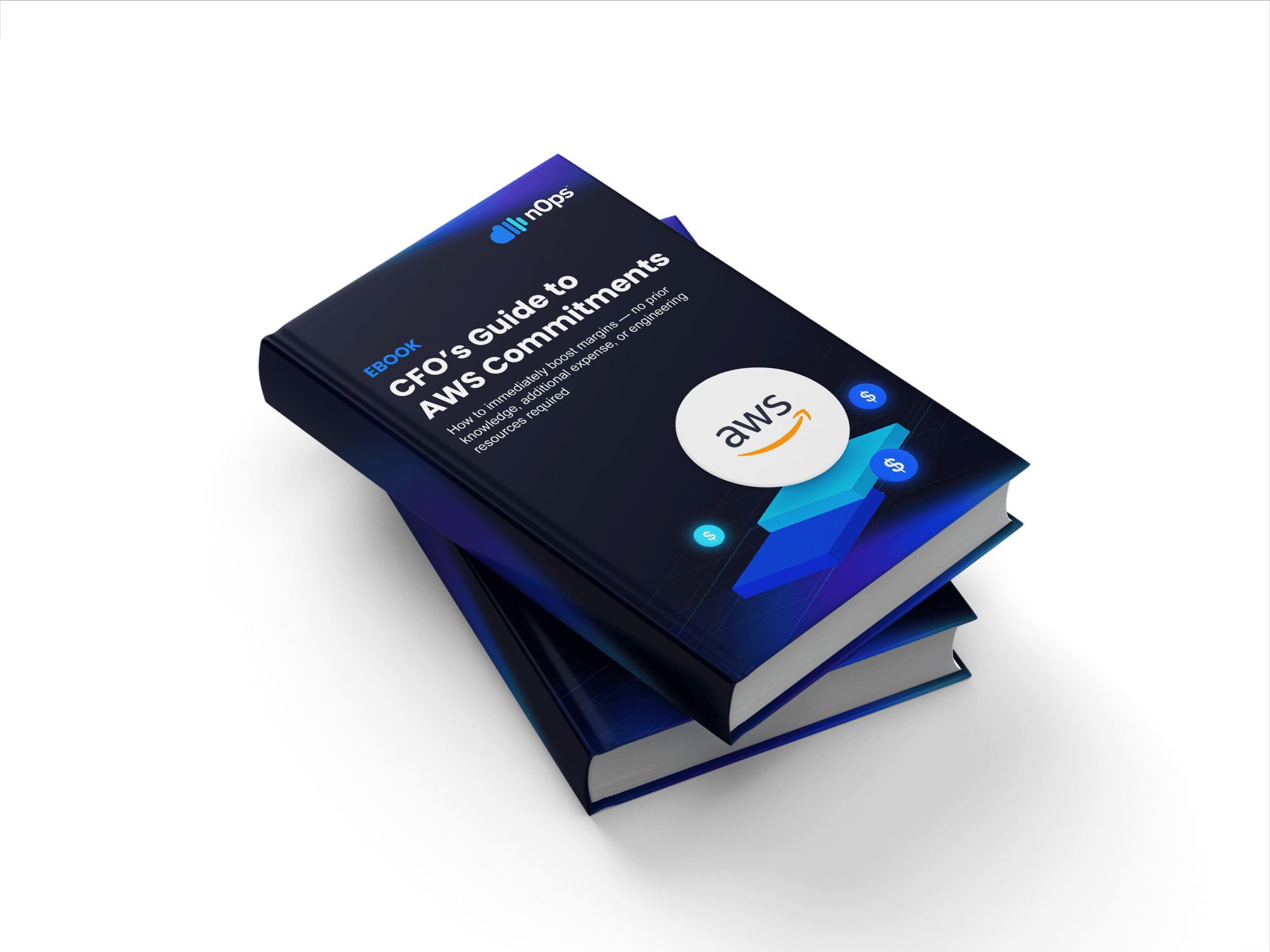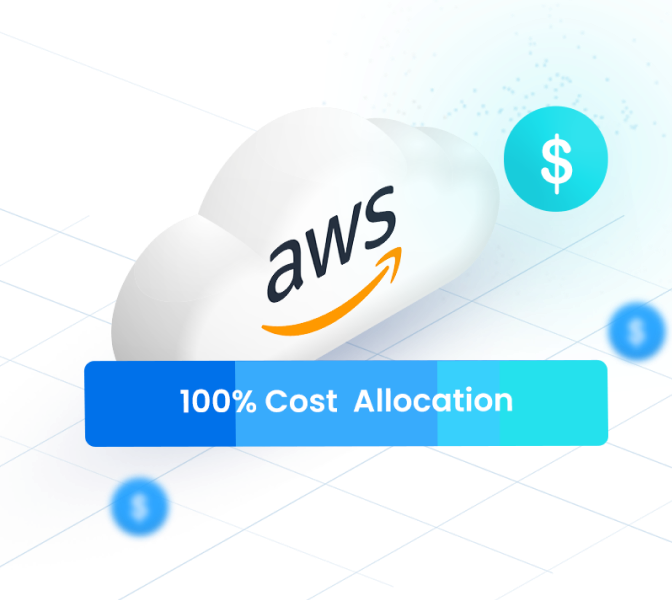- Blog
- EKS Optimization
- Kubernetes Cost Allocation: The Essential Guide
Kubernetes Cost Allocation: The Essential Guide
As teams scale containerized workloads, cloud bills grow — and so does the complexity of figuring out who’s actually responsible for what.
In this guide, we’ll walk through the challenges of Kubernetes cost allocation, what data you need to get it right, how to choose an allocation strategy, and how to operationalize reporting and accountability at scale.
Why Kubernetes Cost Visibility & Cost Allocation Is So Difficult
Kubernetes gives engineering teams flexibility and control — but it complicates everything about cost accountability. Why?

1. Containers Break the One-to-One Mapping Model
In traditional cloud environments, you can map a resource (like an EC2 instance) directly to a team, project, or cost center using tags. But in Kubernetes:
- Multiple containers from different teams may run on the same node.
- Shared infrastructure like EKS control planes or ingress controllers support many workloads.
- Tagging at the cloud resource level doesn’t capture pod- or namespace-level ownership.
This breaks the classic FinOps model of “tag and allocate.”
2. Kubernetes Is Highly Dynamic and Usage ≠ Cost
Pods scale in and out. Workloads move across zones or regions. Containers may live for minutes. This creates issues like:
- Inconsistent label data or missing tags when pods are short-lived
- High overhead for tracking and storing historical container usage
- Cost spikes from autoscaling or overprovisioned resource requests
A container’s CPU usage might be low—but if it requested high resources, you’re still paying for reserved capacity.
Metric Used for Allocation | Pros | Cons |
Requests | Predictable billing, easy to apportion | Teams may under-request to avoid charges; unused capacity still billed |
Actual Usage | More accurate to what was consumed | Doesn’t account for idle capacity or reserved but unused resources |
3. “Invisible” Costs Add Up
Besides compute, containerized workloads incur:
- Storage costs: persistent volumes, image layers, backups
- Observability: logs, metrics, and traces from every container
- Security tools: scanning, firewalls, IAM enforcement
- Control plane: EKS charges, etcd, networking layers
Most of these aren’t traceable to a specific pod or namespace in billing tools.

What You Need for Accurate Allocation
Now that we’ve covered why Kubernetes makes cost allocation difficult, let’s walk through what’s actually required to do it well. You need to bring together cloud billing data, cluster-level usage data, and metadata that maps workloads to teams, environments, or projects.
1. The AWS CUR
The AWS Cost and Usage Report is your billing source of truth. It shows what you’re being charged for—compute, EBS volumes, networking, EKS control plane, etc.—but only at the node level. It doesn’t know about your pods or namespaces. You’ll need to augment this data with in-cluster metadata to bridge that visibility gap.
Use hourly granularity and include resource IDs to enable more accurate mapping, especially for ephemeral workloads.
2. Cluster-Level Usage Data
Kubernetes itself provides the usage data needed to allocate costs internally. Tools like Prometheus or metrics-server can track container CPU, memory, and uptime, as well as which pod ran on which node and when.
To assign node costs to pods, collect both resource requests and actual usage. This helps you apportion costs based on either guaranteed capacity or real-world consumption.
There are a few ways to gather this data in practice, each with tradeoffs:
- AWS Split Cost Allocation Data: AWS offers built-in split cost allocation based on requests. It’s free and available through the billing console, but it’s limited—focused only on resource requests, which doesn’t reflect actual usage or idle capacity. The data is also hard to interpret and lacks visibility into credits or shared cost attribution.
- Amazon Managed Prometheus: This service collects detailed usage metrics at the container level. It can tell you what was used, when, and by whom—but not how much it cost. It’s also expensive to run at scale, and translating usage into real cost attribution (especially across dynamic clusters) requires significant effort and infrastructure.
- CloudWatch Container Insights: CloudWatch also provides container-level metrics and usage patterns. Like Prometheus, it surfaces granular usage data but doesn’t offer direct cost allocation. The cost to run it adds up, and it doesn’t visualize or map spend by team, namespace, or service out of the box.
You can stitch together these tools and data sets, but doing so is operationally complex and resource-intensive. (Alternatively, nOps combines usage data, billing data (via CUR), and workload metadata automatically—providing 100% accurate, credit-adjusted cost allocation down to the pod level, with significantly lower overhead.)
3. Map Node Costs to Pods and Workloads
Since you’re billed at the node level, the core task is to split node costs among the pods that ran on them. This step is essential to ensure fair distribution of compute, storage, and network costs across teams or services.
You can:
- Use resource requests (e.g., a pod that requested 2GiB on a 16GiB node gets 12.5% of the cost),
- Use actual usage (e.g., CPU and memory metrics over time),
- Or use a hybrid model—baseline allocation by requests, with adjustments based on usage.
But to do this, you need both usage metrics and billing data. With AWS’s tools, this requires stitching together CUR, Prometheus/CloudWatch, and your own metadata—plus managing the infrastructure to store and process it all. It’s possible, but it’s time-consuming, error-prone, and expensive to maintain. (With nOps, this process is fully automated. It handles ingestion, correlation, reporting, and even credit and discount adjustments—so you get 100% accurate container-level cost allocation, right out of the box.)
4. Use Labels and Namespaces for Ownership
To allocate costs to the right teams or business units, you need consistent metadata. Kubernetes labels like team, env, or app should be applied to every workload, and namespaces should reflect environments or business units.
For enforcement, use policy engines like Open Policy Agent (OPA) or Gatekeeper to ensure required labels are present and follow naming conventions. Aligning Kubernetes labels with cloud-level cost allocation tags improves traceability from billing data to workload ownership.
Allocating Cluster Costs in Practice
Once you’ve gathered billing data and in-cluster metrics, you need to choose a strategy for dividing shared cluster costs across teams or workloads. Here are the most common models used in practice:
Allocation Method | Description | Pros | Cons | Best For |
Proportional by Resource Requests | Allocate based on CPU/memory requested by each workload | Simple to implement; aligns with reserved capacity | Overprovisioning inflates cost share; idle resources still billed | Most teams starting cost allocation |
Actual Usage-Based | Allocate based on CPU/memory actually used over time | More accurate; encourages efficiency | Harder to track; penalizes safe over-provisioning | Teams with strong monitoring & discipline |
Equal-Split or Fixed % | Divide costs evenly or with predefined splits across teams or projects | Simple; no metrics required | May feel arbitrary or unfair at scale | Early-stage programs or small teams |
Custom Business Rules | Combine usage, labels, team ownership, and service type to drive allocation | Highly flexible; supports complex org structures | Requires enforcement, automation, and internal agreement | Mature FinOps teams with platform support |
AWS gives you the raw data to make these models work—but actually implementing them is hard. You’ll need to manually stitch together CUR, usage metrics, and labels to apply any of these allocation methods accurately, especially when it comes to incorporating credits, shared services, or idle capacity.
Many teams try to shortcut this with tools like Kubecost or CloudHealth, but their internal logic often applies blackbox math that doesn’t fully align with your actual AWS bill. These platforms typically miss credit reconciliation, don’t properly handle shared infrastructure like the EKS control plane, and often produce inconsistent results across teams. (By contrast, nOps automatically maps CUR and usage data to your allocation model of choice—handling reserved instance amortization, credits, and shared costs with full transparency.)
Reporting and Operationalizing FinOps
Once you’ve allocated costs by pod, team, and service, the next step is turning that data into reporting that drives visibility, accountability, and optimization. This phase is where raw data becomes a FinOps practice.
1. Build Multi-Dimensional Cost Views
To make cost data actionable, structure it around the dimensions teams care about:
- By team (based on labels like team=foo)
- By environment (env=prod, env=dev)
- By application or service (e.g., microservice name, Helm release, workload label)
- By namespace (for sandboxing cost views per tenant or BU)
Reports should support filtering by these dimensions and allow drilldowns from aggregate to pod-level cost detail.
2. Enable Scoped Reports for Showback and Chargeback
To hold teams accountable, generate scoped reports filtered by label, namespace, or business unit. Deliver them to engineering or finance via:
- Scheduled Slack or email reports
- Embedded dashboards in existing tooling (e.g., Backstage, Datadog, Grafana)
- CSV exports for monthly budget reviews
These reports can power:
- Showback — visibility into usage/cost without enforcement
- Chargeback — attribution of shared costs to team budgets
Use scoped reporting to surface shared costs (e.g., system pods, observability agents) and unallocated spend to drive better tagging.
3. COGS (Cost Of Goods Sold) / Business Unit Economics
Teams need to calculate cost per customer for internal and external customers to understand margins, make pricing decisions, etc.
There are typically two patterns here:
- Dedicated Customer Workloads: If each customer runs in a separate namespace or set of containers, calculating per-customer COGS is straightforward — as long as you have accurate allocation and labeling in place.
- Shared Services Across Customers: Things like ingress controllers, shared storage, and monitoring agents need to be split proportionally across customers. Doing this manually in Excel gets complicated fast — especially when trying to reconcile credits, amortized commitments, and shared costs across hundreds of containers.
With nOps, this entire process is automated. The Business Unit Economics and COGS Planning features let you define cost attribution rules, allocate shared services, and track per-customer costs over time — without writing complex spreadsheet logic or relying on the finance team to manually stitch it together.
Once COGS is visible and scoped, you can use it to support margin analysis, pricing decisions, and cost optimization efforts across your customer base.
4. Operationalize Cost Accountability
Visibility isn’t enough — FinOps practices require that teams act on cost data. Build cultural and process support by:
- Enforcing labeling policies with OPA or Gatekeeper
- Flagging unallocated resources and assigning them to platform or shared cost centers
- Reviewing cost reports in regular engineering rituals (e.g., sprint retros, ops reviews)
- Setting team-level budgets or alerts based on historical usage
If you’re early in your journey, start with monthly team-level showback using resource requests. As maturity grows, layer in actual usage-based chargeback, anomaly detection, and unit economics.
Automate Kubernetes Cost Allocation
Choosing the right tool to support Kubernetes cost allocation and reporting is just as important as choosing the right strategy. Want to see what you’re really paying to run Kubernetes? The all-in-one nOps feature set includes:
- Kubernetes Cost allocation: Allocate 100% of your AWS bill down to the container level with automated tagging, showbacks, chargebacks
- Total EKS Visibility: See cost, usage, and efficiency data across nodes and containers—plus pricing insights—all in one powerful Kubernetes UI
- Full Stack Reporting: Dashboards, reports, budgets, forecasting, and anomaly detection for visibility into 100% of your Multicloud, K8s, SaaS & AI spend
- EKS Optimization: continuously manage, scale, and optimize at the node, pod and pricing level
Hop on a call to find out how to get 100% accurate Kubernetes cost allocation set up in minutes.
nOps was recently ranked #1 with five stars in G2’s cloud cost management category, and we optimize $2 billion in cloud spend for our customers.




